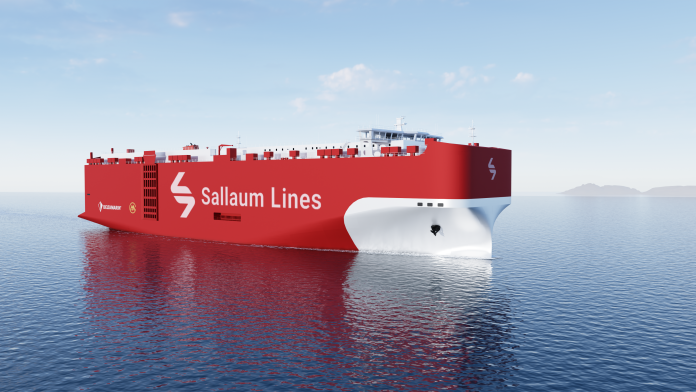Europe’s leading finished vehicle handling ports and shipping companies are grappling with challenges from imbalanced trade flows, sea and port capacity constraints, and labor shortages.
A surge in vehicle imports from China and its original equipment manufacturers (OEMs) adds to these pressures. To adapt to these market dynamics and capitalize on the growing influence of Chinese manufacturers, Swiss company Sallaum Lines has implemented several measures to address increased cargo volumes and stretched transport capacity.
Sallaum Lines has ordered six state-of-the-art Pure Car and Truck Carrier (PCTC) vessels to bolster its capabilities.
These vessels, built by Fujian Mawei Shipbuilding (2 x 7,500 CEU SDARI design) and China Merchants Jinling Shipyard (Nanjing) (4 x 7,400 CEU Deltamarin design), are designed to the highest industry standards. Each has a capacity of 7,400–7,500 Car Equivalent Units (CEU).
Moreover, equipped with cutting-edge dual-fuel LNG technology, these vessels will achieve a minimum 25% reduction in carbon dioxide emissions, aligning with global environmental goals. Additional retrofits are expected to further enhance their eco-friendly performance, underscoring Sallaum Lines’ commitment to sustainable operations.
Additionally, aiming to strengthen collaboration with Chinese OEMs and better serve the Chinese market, Sallaum Lines has established a dedicated office in China. This local presence is expected to enhance the company’s ability to build strong partnerships, provide tailored logistics solutions, and respond swiftly to market demands. By being closer to its partners, Sallaum Lines ensures efficient communication and coordination, enabling it to better address the unique needs of Chinese manufacturers.
In Europe, Sallaum Terminal, the cornerstone of the company’s shipping operations, has embarked on a major investment plan at the Port of Antwerp-Bruges, specifically at Haven 332. A centrepiece of this initiative is the construction of a multi-story Parkhouse spanning 47,000 sqm. Phase one of the project will expand the terminal’s capacity to 15,000 units, while phase two will increase this further to 17,000 units. These expansions come at a critical time, addressing space constraints faced by many European terminals and enhancing the terminal’s ability to handle growing vehicle volumes efficiently.







